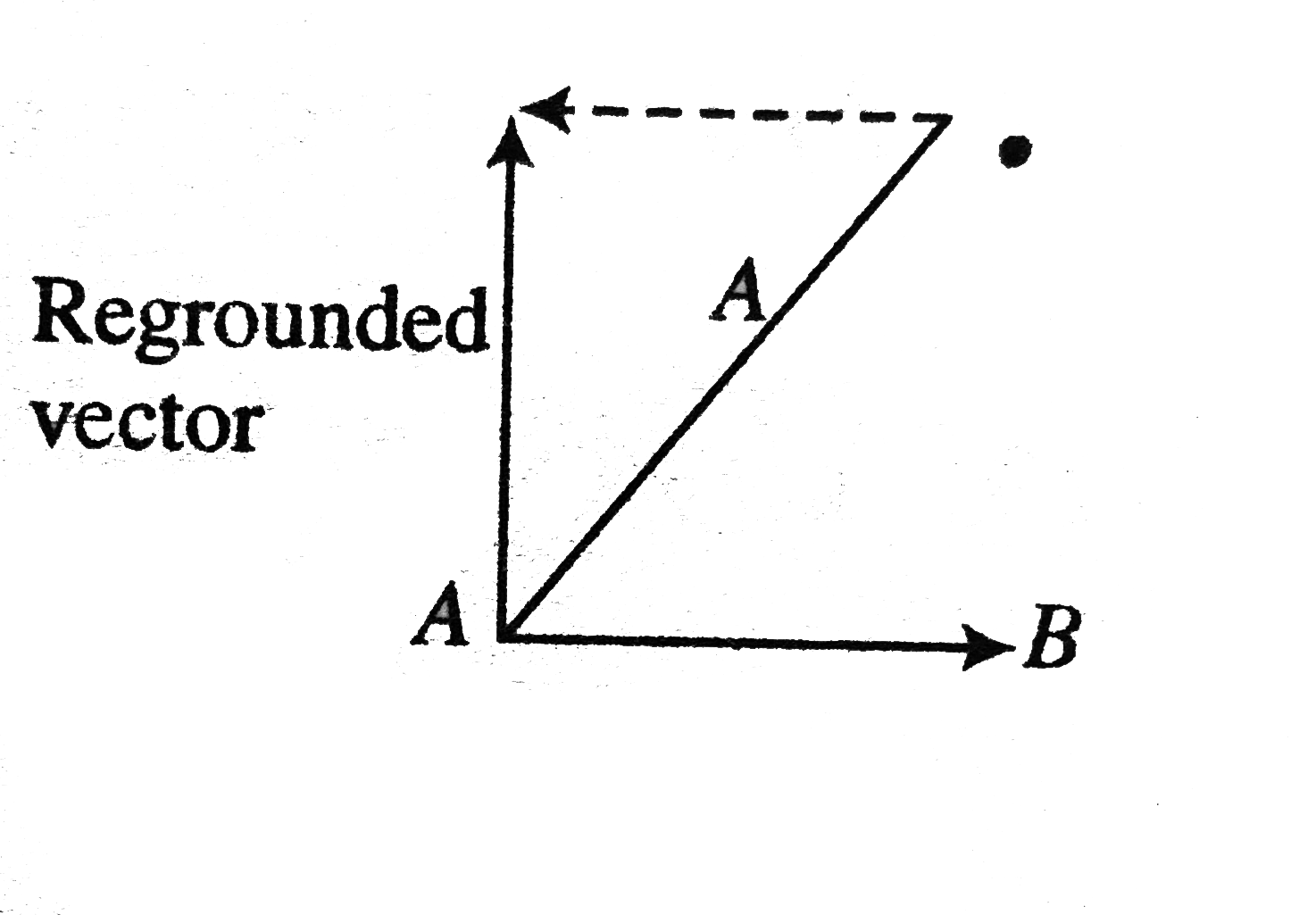If →A=2ˆi+ˆj and →B=ˆi−ˆj, sketch vector graphically and find the component of →A along →B and perpendicular to →B
Video Solution
Text Solution
The correct Answer is:Component of A along B;12(ˆi−ˆj);Compo≠ntofAperpendica––r→B;32(ˆi+ˆj)
→A=2ˆi+ˆj,→B=ˆi−ˆj
Component of A along B
=A⋅BB.ˆB=Acosθ.ˆB
2−1√2.(ˆi−ˆj)√2=12(ˆi−ˆj)
Component of A perpendicular to B
=→A−(compon ent of→Aalong→B)
=2ˆi+ˆj−12(ˆi−ˆj)=32ˆi+32ˆj=32(ˆi+ˆj)

|
Updated on:21/07/2023
Topper's Solved these Questions
- BOOK - CENGAGE PHYSICSCHAPTER - VECTORSEXERCISE - Exercise Single Correct51videos
VECTORS
- BOOK - CENGAGE PHYSICSCHAPTER - VECTORSEXERCISE - Exercise Multiple Correct5videos
VECTORS
- BOOK - CENGAGE PHYSICSCHAPTER - VECTORSEXERCISE - Exercise 3.213videos
VECTORS
- BOOK - CENGAGE PHYSICSCHAPTER - TRAVELLING WAVESEXERCISE - Integer9videos
TRAVELLING WAVES
- BOOK - CENGAGE PHYSICSCHAPTER - WORK, POWER & ENERGYEXERCISE - Archives (integer)4videos
WORK, POWER & ENERGY
Similar Questions
Knowledge Check
- Question 1 - Select One
If →A=2ˆi+ˆj+ˆk and →B=ˆi+2ˆj+2ˆk, find the magnitude of compinent of (→A+→B) along →B
A4 unitB5 unitC6 unitD7 unit - Question 2 - Select One
→Aand→B are two vectors given by
→A=2ˆi+3ˆjand→B=ˆi+ˆj. The magnitude of the component of →A along →B isA5√2B3√2C7√2D1√2 - Question 3 - Select One
If →A=3ˆi−4ˆj and →B=2ˆi+16ˆj then the magnitude and direction of →A+→B will be
A5,tan−1(12/5)B10,tan−1(5/12)C13,tan−1(12/5)D12,tan−1(5/12)
If →a=2ˆi−ˆj+2ˆk and →b=6ˆi+2ˆj+3ˆk, find a unit vector parallel to →a+→b.
View SolutionIf →a=4ˆi+6ˆjand→b=3ˆj+4ˆk, then find the component of →aand→b.
View SolutionGiven →A=3ˆi+2ˆjand→B=ˆi+ˆj. The component of vector →A along vector →B is
View SolutionIf →a=2ˆi+2ˆj+3ˆk,→b=−ˆi+2ˆj+ˆkand→c=3ˆi+ˆj are three vectors such that →a+t→b is perpendicular to →c, then what is t equal to ?
View SolutionLet →a=ˆi+ˆj+ˆk,→b=ˆi−ˆj+2ˆk and →c=xˆi+(x−2)ˆj−ˆk. If the vector →c lies in the plane of →a and →b then x equals
View Solution

